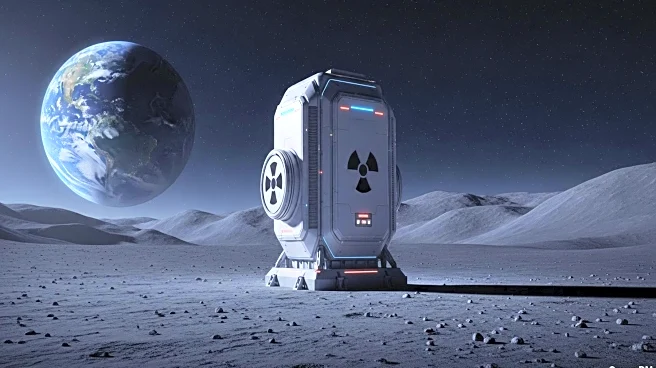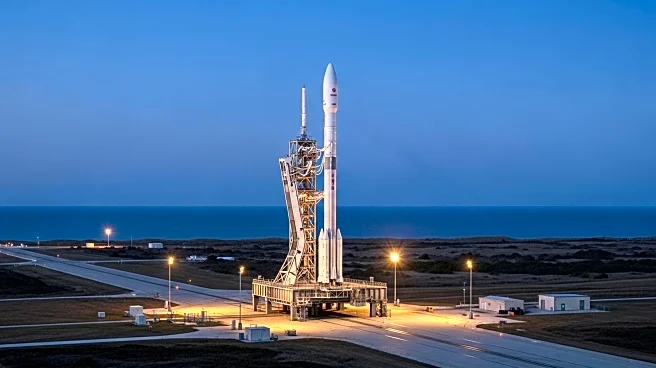What is the story about?
What's Happening?
NASA is progressing with its plans to develop a lunar nuclear power system, emphasizing commercialization. On August 29, NASA released a draft Announcement for Partnership Proposals (AFPP) for its Fission Surface Power initiative, seeking industry input for the final version. The initiative aims to implement a policy directive signed by Acting Administrator Sean Duffy on July 31, which calls for a reactor capable of producing at least 100 kilowatts of power, ready for launch by the end of 2029. NASA plans to pursue this effort through public-private partnerships using funded Space Act Agreements. The draft AFPP states NASA can select one, multiple, or none of the proposals. The reactor is intended to operate in the lunar south polar region for at least 10 years, with companies owning the reactor and selling power to NASA and other customers.
Why It's Important?
The development of a lunar nuclear power system is significant as it represents a strategic shift in space exploration, driven by a sense of urgency due to proposals from China and Russia for megawatt-class lunar reactors. This initiative could establish a commercial space nuclear sector, providing a sustainable power source for lunar missions and potentially other space endeavors. The collaboration between NASA and private companies could accelerate technological advancements and foster innovation in nuclear power systems. The success of this initiative could enhance the U.S.'s position in space exploration and technology, offering new opportunities for industry stakeholders and potentially influencing global space policies.
What's Next?
NASA is expected to finalize the AFPP by October 3, including funding details, with awards anticipated by March 2026. Companies will need to submit financing plans and commercial lunar power business strategies. The initiative's progress will likely be closely monitored by industry stakeholders, with potential impacts on future lunar missions and space exploration strategies. The collaboration could lead to advancements in nuclear technology and influence international space exploration efforts.
AI Generated Content
Do you find this article useful?
















